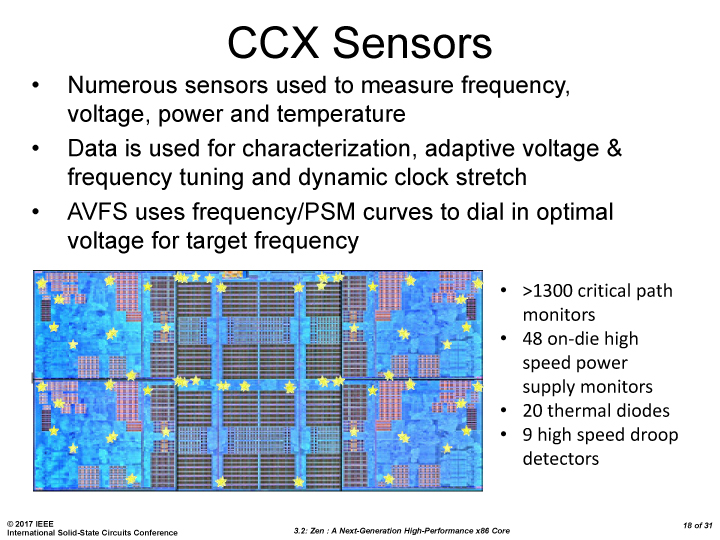Ever since AMD announced the new Ryzen processors in early December, there has been a steady stream of information leaks, alleged benchmarks, and even a handful of possible stock keeping units a few days ago. So it should come as no surprise that a handful of slides have made their way onto the web going more in-depth with AMD’s latest and greatest.
In fact, it appears most of the presentation is uploaded on the Japanese site PC Watch despite the fact that none of the information was intended for the public, at least yet. There is a lot to parse through there and a lot of it is overly technical, but at least a few slides may have implications on the end-user experience.
Notably, AMD takes the time to compare the new Zen core with an unnamed-but-probably-Intel competing chip. Not only does the Zen die come in at a slightly smaller footprint than the competitor, which is also 14nm, but it manages to squeeze in L2 cache much more efficiently.

There is also some information on the way the Zen chips handle heat and power. Through a combination of more than 1,300 path monitors, 48 power supply monitors, 20 thermal diodes, and nine droop detectors, the chip is constantly gathering massive amounts of data. This usage data can be flipped back around and used for identifying stronger cores, providing perfect power to every part of the chip, and pushing clock speeds to their absolute maximum.
There are some other interesting facts stashed away among the slides. The Zen architecture will adopt simultaneous multithreading, a more traditional multi-tasking process akin to Intel’s Hyper-Threading. Per-core voltage and frequency control appear to be platform-wide features and despite a huge possible voltage range, all chips carry a 3.4GHz or higher base clock speed.
While it is always good to take leaks and rumors with a grain of salt, it is hard to see much benefit in leaking fake processor technicalities. We are also close enough to an alleged release that this sort of information should be making its way to possible partners and engineers. These modern features should help accelerate the hype on an already promising release and, if they are true, we’ll know soon enough.









